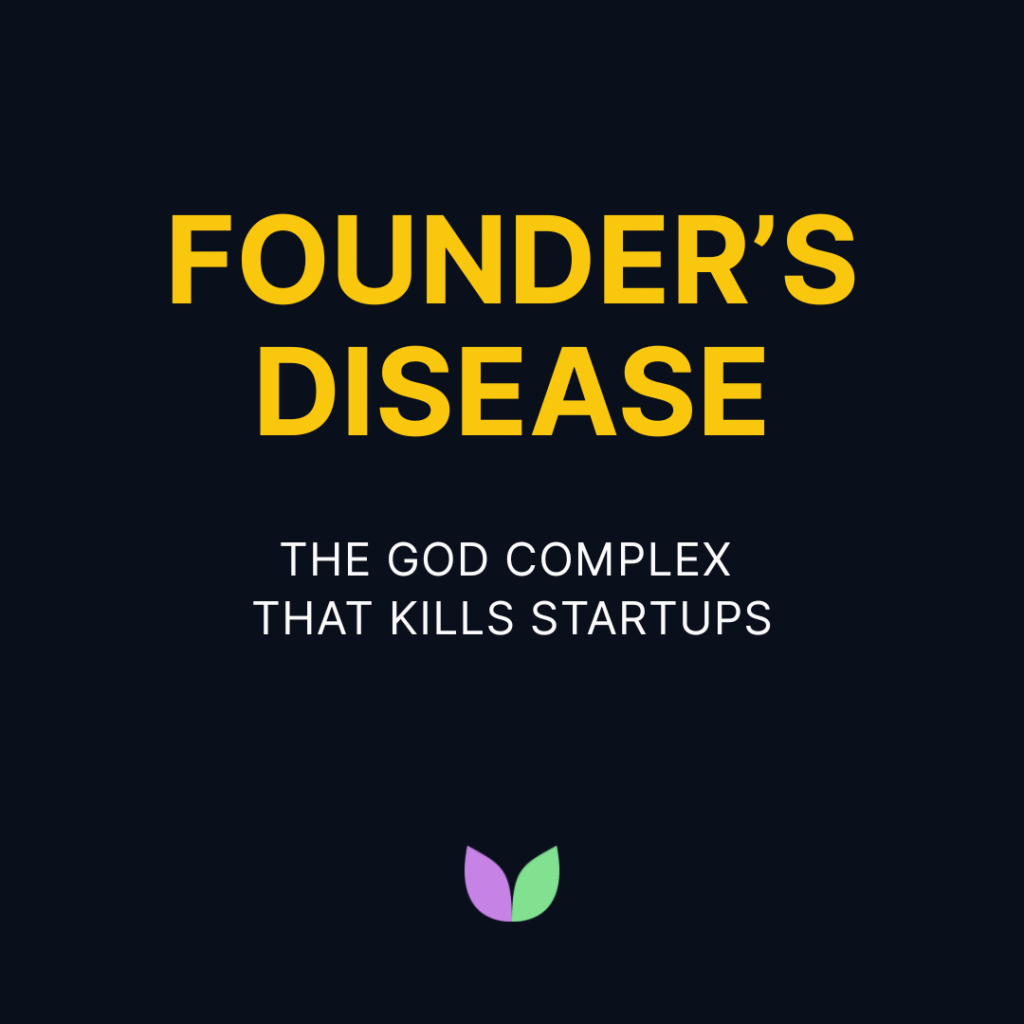Founder’s Disease: The God Complex That Kills Companies
Every founder loves to say:
“I wish I had time to focus on strategy.”
“I’m stuck in ops and approvals.”
“No one else gets it like I do.”
You say it like you’re a victim.
You expect applause for being overwhelmed.
But really, deep down:
You’re not overworked.
You’re addicted to control.
You don’t have a company.
You have Founder’s Disease.
It’s the startup version of Doctor’s God Syndrome. You think you’re the only one who can:
- Approve that hire
- Close that deal
- Handle that crisis
- “Steer the ship”
And slowly, without realizing it, you’ve built something that only functions if you’re awake, online, and involved in every corner.
You’re not scaling.
You’re suffocating your company.
And one day, the board, your team or your burnout will force you out.
If it dies without you, you didn’t build a company.
You built a hostage situation.
Travis Kalanick built Uber and got pushed out.
Elizabeth Holmes was Theranos, and when she collapsed, it went with her.
Meanwhile, Satya Nadella quietly rebuilt Microsoft by building people, not dependencies.
Legacy isn’t staying longer.
Legacy is leaving, and nothing breaks.
Let’s get specific. You want out of the weeds? Then stop playing the hero in every function and start designing systems that outlive your presence.
Here’s what “systems” actually look like:
HR
What you’re doing: Interviewing 30 candidates, rewriting every JD
What systems look like: Hiring scorecards, onboarding playbooks, and empowered leads who don’t need you to approve every hire
Admin & Finance
What you’re doing: Approving every SaaS tool, scanning invoices
What systems look like: Spend limits, automated reports, finance policies people can follow without a Slack DM to you
Product
What you’re doing: Overriding PMs, reacting to feature requests in real time
What systems look like: Product principles, roadmap rituals, and a team that can say “no” without your permission
Delivery
What you’re doing: Firefighting every client issue
What systems look like: Escalation protocols, ownership charts, QA processes and retros that don’t need you to babysit
Sales
What you’re doing: Closing every big deal yourself
What systems look like: A sales playbook, pricing guardrails, a VP of Sales who wins without your face in every room
Marketing
What you’re doing: Rewriting copy, tweaking every deck, hovering over campaigns
What systems look like: A brand narrative, performance dashboards, and a demand-gen engine that runs without your late-night Slack edits
Customer Success
What you’re doing: Jumping in to “save” key accounts, chasing renewals
What systems look like: Playbooks for onboarding, churn prevention workflows, and a CS leader who owns expansion without waiting for your green light
Engineering
What you’re doing: Meddling in architecture, firefighting bugs, forcing tech shortcuts
What systems look like: Technical governance, empowered leads, CI/CD pipelines, and sprint reviews that don’t revolve around your gut feel
Your obsession with control is killing your scale. You’re not a founder anymore.
You’re a bottleneck with a calendar full of decisions others should be making.
You either build systems to run without you.
Or you’ll burn out while everyone else waits for your green light.
The best founders don’t chase control.
They chase freedom.
They walk away.
And things get better.
That’s the real exit strategy.
The cure for Founder’s Disease isn’t more control.
It’s conscious disempowerment.
This isn’t theory.
I’ve fixed this inside companies where the founder was the product.
The process isn’t easy.
But it works.
If this feels uncomfortably familiar, you don’t need more hustle; you need help.
Let’s talk before your company becomes the next cautionary tale.
